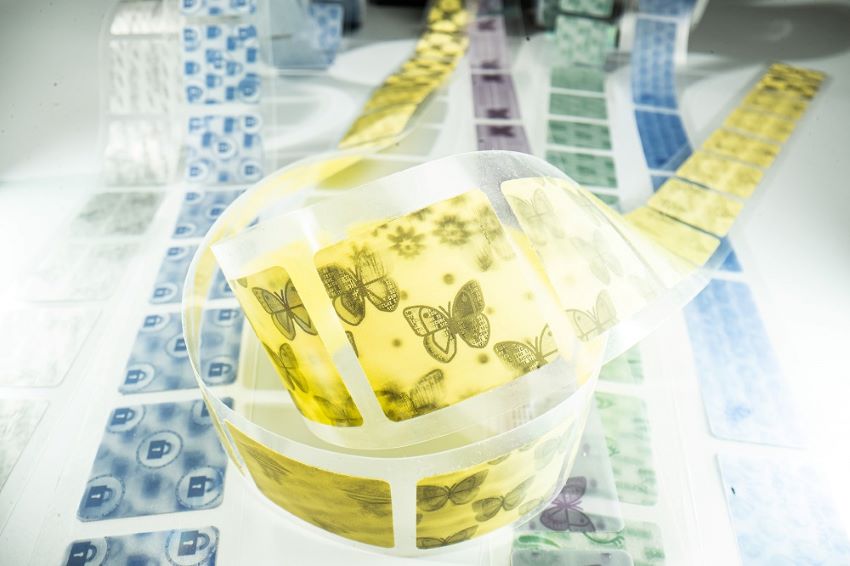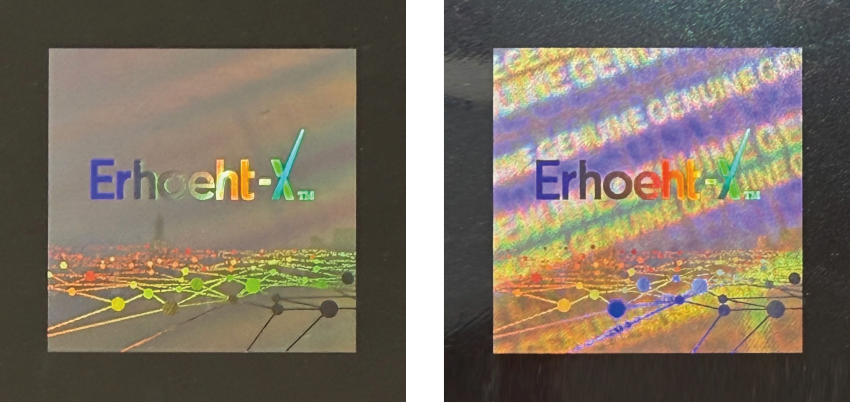



As overt security technologies (OST) evolve beyond traditional holography, Dr Mark Deakes, chair of the International Optical Technologies Association (IOTA), considers integrated optical solutions taking centre stage. These OSTs are becoming vital to banknotes, identity security, product authentication and brand protection – offering robust, sustainable defences against the growing threat of illicit activities.

A cornerstone of anticounterfeiting solutions, holography has continued to evolve in the face of expanding market applications, security sector mergers and acquisitions and consolidation among solutions providers. As part of this evolution, we now see holography embedded into a broader suite of OST, including micro-lenses, micro-mirrors, colour-shifting technologies, and print and diffractive structures, designed to meet advanced security demands from central banks, identity issuing authorities, agencies, and brand owners.
Plasmonics, for instance, is gaining attention. This field manipulates light at the nanoscale using metallic nanostructures and structured colour, enabling new forms of secure visual effects. These innovations are reshaping the banknote and identity markets, where differentiation, authentication, and ease of recognition are paramount.
In the brand protection and product authentication space, the future lies in combining physical features with digital capabilities. The sector has seen consolidation, enabling companies to offer integrated platforms that protect against physical and online counterfeits—an issue that, by some estimates, costs over $1 trillion annually.
With optical + digital = OPTDigital solutions, brand owners secure products through overt visual features linked to digital verification and tracking systems. No longer just static visual deterrents, they now serve as important carrier platforms for consumer engagement, brand protection, supply chain integrity, product recalls, and in some cases, supporting global regulatory compliance.
Companies like Authentix, Crane Authentication, and KURZ lead this transformation. For instance, Crane PROFOUND™ is a suite of micro-optics- based labels and films. Authentix has developed a nano-optic OVD (KolourOptik Stripe and KolourDepth™), that features ‘always-on’ structural colour, 3D depth, and motion.

PROFOUND (© Crane NXT).
In another classical example, TOPPAN has developed a new colour version of its innovative Illumigram™. Originally available only in white, the enhanced version now presents multi-colour 3D text and images that respond to strong light sources, such as a smartphone torch. Unlike conventional rainbow holograms, Illumigrams do not shift with the viewing angle, making them extremely difficult to replicate.

Illumigram™ (© TOPPAN).
Artificial Intelligence (AI) presents both opportunities and challenges. On one hand, AI tools can enhance the design of security features, improve data analysis, and assist in digital verification. On the other hand, technologies such as deepfakes and image manipulation pose significant threats to the integrity of visual authentication.
The legal landscape is gradually evolving to address these challenges. Though many uncertainties persist, the EU AI Act is an example of efforts to regulate emerging technologies. In response, some organisations have already limited AI’s use in research and development settings to protect intellectual property and security integrity.
As end-users become more environmentally conscious, sustainability is influencing security design. Manufacturers are investing in eco-friendly materials and production processes. IOTA members such as Hueck Folien, KURZ, Constantia, Hazen Paper, Holostik and Uflex have significantly progressed in recycling technologies and reducing their carbon footprints.
This sustainability focus is essential. Counterfeiting is a global threat that transcends borders, and the tools we use to fight it must be effective and responsible. Advanced OSTs must align with corporate social responsibility strategies to futureproof their adoption.
In addition, next-generation OSTs bring added value through seamless integration, durability, and user-friendly authentication. The newer nano-optic features are designed to work with existing production equipment, offering practical upgrades to older micro-optic systems.
Optical technologies must adapt to changing threats and evolving markets. The challenge for research and development teams is to create the next generation of authentication tools by integrating physical innovations, such as plasmonics and micro-optics, with digital platforms.
As we move forward, it is evident that holography, colour-shifting, structured light, diffractive, and nano-optic technologies will continue to play a vital role in the fight against counterfeiting and fraud.
Their integration with digital innovations promises a bright and secure future – one in which optical solutions will continue to safeguard brands, documents, and identities worldwide.
Solutions must be secure, user-friendly, durable, and sustainable.